Terry primrose: varieties and cultivation from seeds

Terry primrose is one of those plants that bloom earlier than all others in the spring. And its very name in translation from Latin means "early". Terry primroses are used for growing as indoor plants, as well as for a variety of landscaping in the garden, because primrose looks best in various flower beds in combination with other plants. Next, we will take a closer look at the varieties of terry primroses, find out the nuances of growing them from seeds and the subtleties of subsequent care.
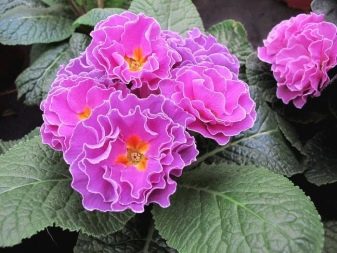

Description
Terry primrose belongs to the primrose family, most of the varieties are low and at the same time beautifully flowering herbaceous plants. The plant belongs to perennials, the leaves are green, they are whole, with small wrinkles and hairs.
Flowers can be of different shades, it all depends on the variety, they have five single or collected petals in inflorescences. The stems are thin. Primroses are considered to be quite unpretentious in cultivation and care, in addition, they have a very high adaptability to different growing conditions. Most of the varieties tolerate Russian winters well.
Many hybrid varieties of primroses are winter hardy and can survive temperatures as low as -35 degrees.


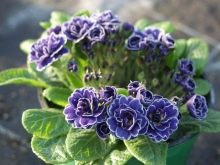
Flowering most often occurs in May or June, lasts about 35-40 days. Much depends on the place of growth and weather conditions. Re-flowering often occurs in August, and sometimes in early autumn. The flowers of the plant, as a rule, are no more than 2 cm in diameter.
Varieties
Today there are quite a large number of varieties of terry primroses. Perhaps the most beautiful of them are the hybrid ones. Let's consider them in more detail.
- Light green terry primrose looks very impressive and exotic Francesca, there is a noticeable yellow eye in its center. In height, this hybrid reaches no more than thirty centimeters, belongs to winter-hardy varieties.
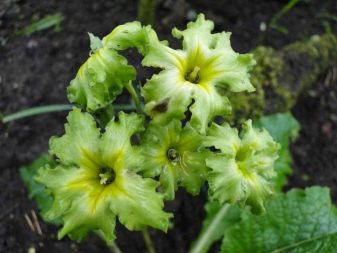
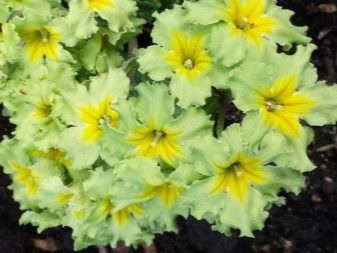
- We recommend paying attention to the primrose Elizabeth killelay burgundy with a yellow eye in the middle and a bright yellow border on each petal.
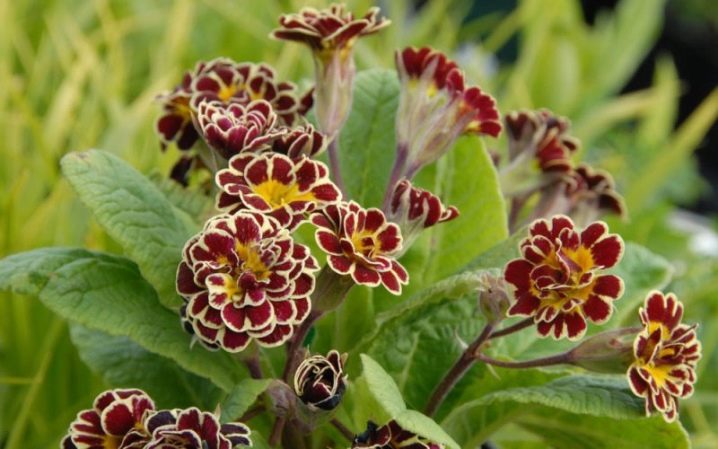
- Terry looks luxurious ear primrose (auricula) in purple. And primrose auricula with lilac-cherry flowers Max is unlikely to leave at least one grower indifferent. Its velvet flowers look very impressive even in buds. In addition, this variety, despite its uniqueness, winters well even in the open field.


- Lovers of bright red primroses can pay attention to the terry hybrid Crimson glow... This primrose, in comparison with other varieties, grows quite small, only about 20 cm, its miniature double flowers are very reminiscent of bright roses.
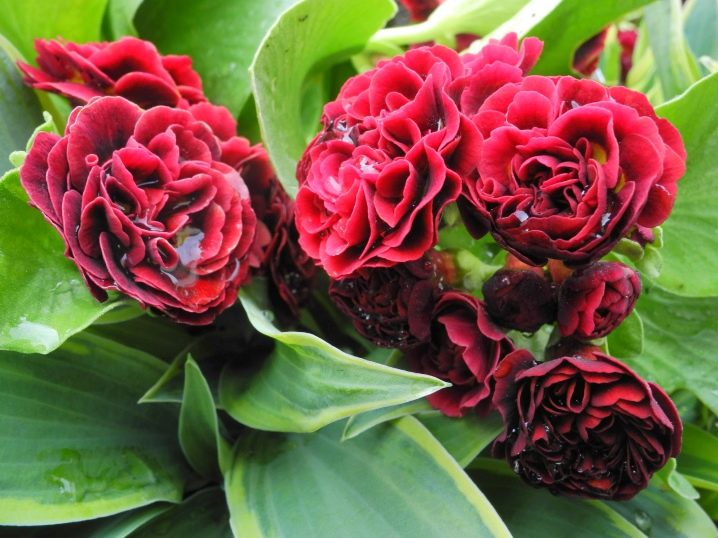
- Primrose apricot-peach shade with terry leaves belongs to the variety Jupp. It has short fleshy leaves with a delicate light edging.
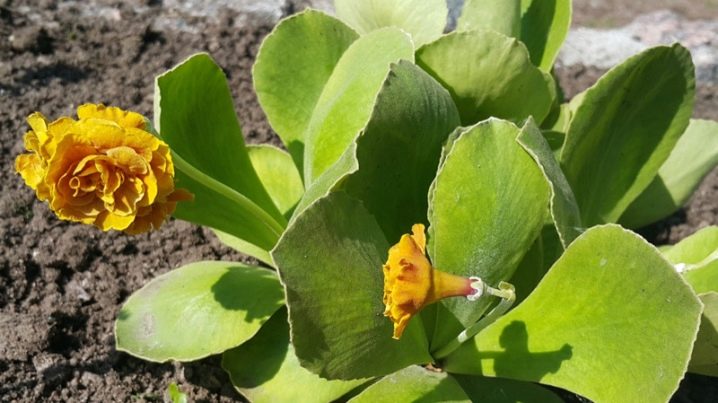
- We recommend taking a closer look at primrose. Nymph, which has a delicate yellowish color with a milky undertone, as well as varieties "Primlet", "Romio", "Rosella" and "Paloma Mix", which will become real decorations for any garden plot.
Hybrid primroses should be purchased only in proven places and from well-established private gardeners. Otherwise, you can not only get not a hybrid, but the most common variety, but also buy a diseased plant.
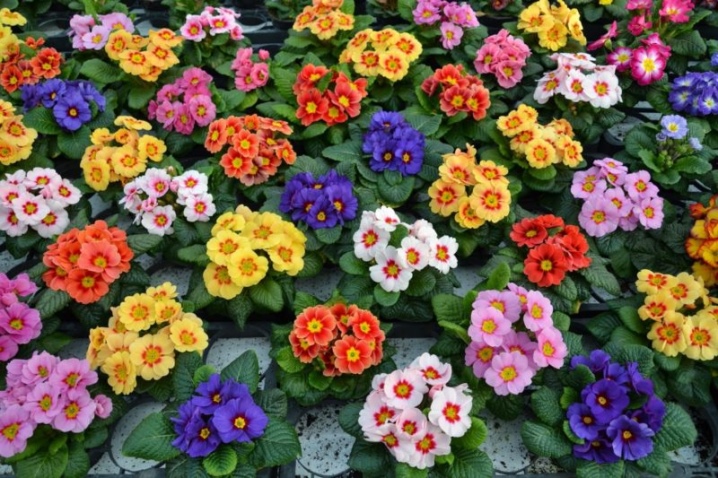
How to grow?
Most primroses are light-loving plants, however, there are those varieties that prefer shady areas to a greater extent. In any case, in order not to guess where to plant the plant, it is best to give preference to penumbra terrain, but only one that is far from groundwater. Waters are very dangerous in that they wash away the rhizomes of plants, as a result of which they die from decay.
You should not plant plants under the scorching sun, otherwise, during flowering, the petals may begin to wither.
Very often, primroses are planted under the crown of trees or in the shade of alpine hills, where they are most comfortable. It is best to use fertile organic soil as soil for primroses, in which plants take root most quickly. The soil should be porous and well-drained.
When growing primrose from seeds, they begin to sow as early as late winter - early spring. But it should be understood that this process is quite laborious and more complicated than growing from a young divided plant. Sow seeds in a small greenhouse or in cups. They need a lot of light to germinate. Most often phytolamps are used for additional illumination.
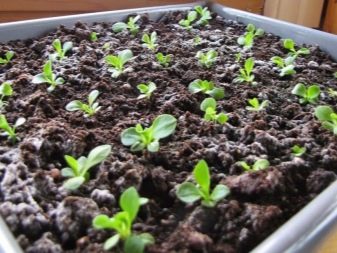

The process of planting seeds takes place in several stages.
- For sowing, it is best to use ready-made store-bought soil, which already contains all the necessary nutrients.
- The seeds are deepened into the ground with a toothpick, but not too deep. Before sowing seeds, it is best to moisten the soil so that the seeds do not dry out later.
- Then the container should be covered with glass or thick film to create a greenhouse effect. Next, the container with seeds should be put in a place that will be well lit, but not under the scorching sun.
- Seeds should be regularly ventilated and moistened with a spray bottle.
- After the seedlings begin to grow and the first leaves appear, young seedlings can begin to dive into separate containers. They will grow in them before planting in the ground.
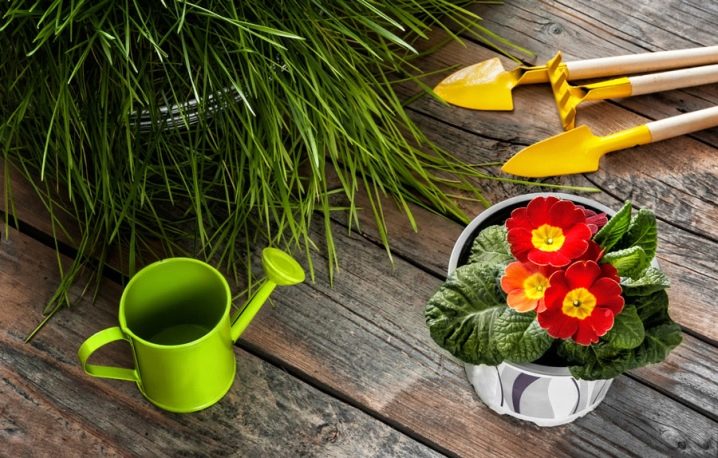
Planting at home is fun and easy, even for beginners.... Also, in addition to home cultivation, sowing of plants can also be carried out in greenhouses, where a certain temperature and air humidity are created for them.
Follow-up care
- It is very important to regularly but moderately water the plants. In this case, it is extremely important to avoid stagnation of water.
- It is necessary to regularly remove the weeds that grow next to the primrose, because they draw out the nutrients necessary for the flowers from the soil.
- In order for the primrose to grow well, usually the soil is loosened after watering. Loosening is a very useful process that prevents crusting and excessive waterlogging on the ground.
- During the growing season, it is recommended to feed the plant about 2-3 times. It is best to use fertilizers with phosphorus and potassium in the composition. Usually, the first feeding is carried out at the beginning of the growth phase, then during flowering, and the last one at the end of the growing season, usually in August.
- Do not forget about mulching. Mulch can be store-bought, from sawdust or dry fallen leaves. The latter are especially recommended for primroses. Despite the fact that many varieties of primroses are winter-hardy, it is best to cover them for the winter as a safety net. In addition to the sheet layer, it is advisable to use a special protective covering material.
- An adult primrose is usually propagated by dividing the mother bush. Most often, after 3-4 seasons, the primrose grows strongly and has to be divided. If the primrose grows in cramped conditions, then over time it will bloom in smaller flowers. When transplanting, the root neck is deepened by no more than 1 cm.
- If insects are found, professional insecticides should be used. You should work with them according to the instructions and do not neglect personal protective equipment.
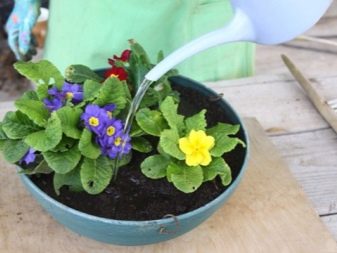
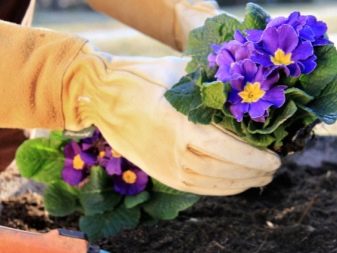
See below for more details.







































































































The comment was sent successfully.